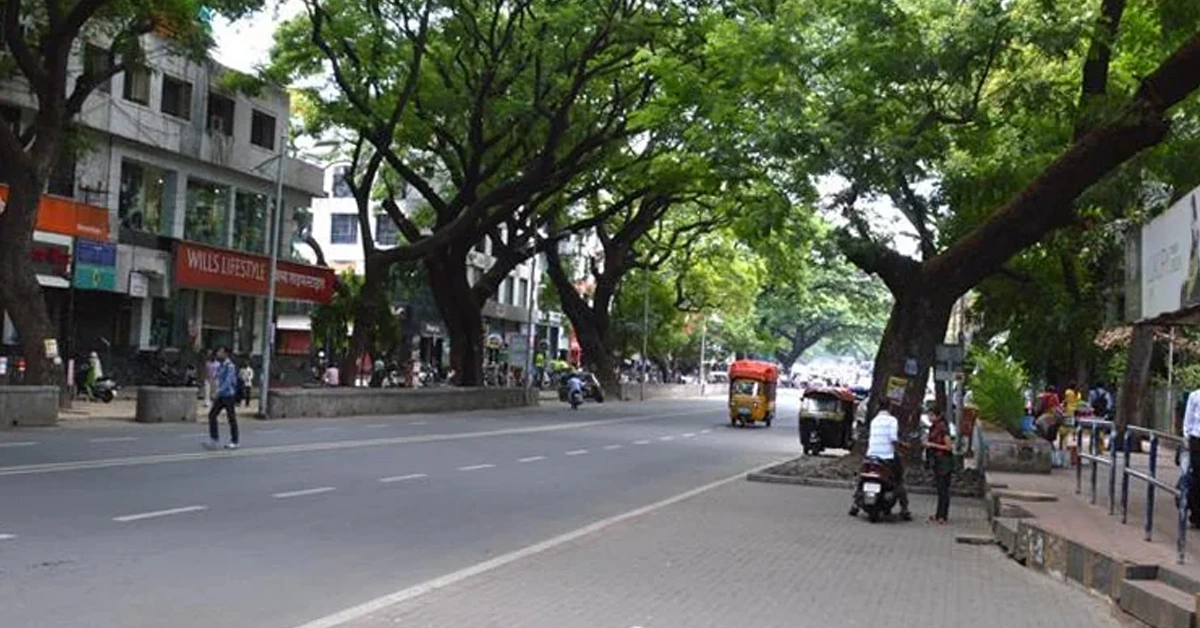
In a country where potholes are routinely blamed on rain and budget constraints, JM Road stands as proof that durable roads are possible—provided we are willing to build them right the first time. As urban legends and civic activists have suggested, local contractors feared that the success of JM Road would set an uncomfortable precedent—one that demanded higher quality, longer warranties, and accountability. Instead of being rewarded, the Parsi brothers were quietly sidelined
In a city often plagued by potholes and deteriorating roads, Pune’s Jangli Maharaj Road—better known as JM Road—has for decades stood as a beacon of engineering excellence and civic foresight.
Constructed in the 1970s, this iconic stretch gained legendary status for remaining virtually pothole-free for nearly 40 years, a feat unheard of in the Indian urban landscape.
But what truly sets its story apart is not just its longevity, but the curious tale of its origin—and the ironic fate of the men who built it.
In 1973, Pune was reeling from the effects of heavy rainfall that had left most city roads battered and broken. Yet in nearby Mumbai, roads had endured similar downpours with minimal damage.
Shrikant Shirole, then a young corporator with the Pune Municipal Corporation (PMC), travelled to Mumbai to investigate the difference. There, he discovered a relatively new road construction technique called the Hot Mix Plant, which ensured greater strength and durability.
Intrigued, Shirole brought this information back to Pune and championed its implementation.
The PMC eventually awarded the contract for JM Road’s reconstruction to a company named Recondo, run by two Parsi brothers.
What made this contract extraordinary was not just the use of state-of-the-art materials and methods, but a written commitment by the contractors: they offered a 10-year guarantee, pledging to repair any damage on the road free of cost until 1985. It was an unprecedented move—both bold and honest.
The road was meticulously designed, with an emphasis on long-term resilience. It had a properly compacted bitumen base, an ideal thickness for the expected traffic, effective gradient slopes for drainage, and edge ducts to prevent the need for future excavation when laying utility lines.
Civil engineers and urban planners began to cite JM Road in textbooks and lectures as a rare example of infrastructure done right.
What followed was a remarkable four decades of structural integrity. JM Road, despite seeing thousands of vehicles every day, remained free from potholes, major cracks, or routine repair work.
In a city where roads are often dug up repeatedly for cable-laying and drainage work, JM Road stood untouched.
Local residents and experts frequently pointed to it as a model for how roads should be built. It was a symbol of what happens when quality triumphs over bureaucracy and profit margins.
And yet, the story carries a bitter undertone. Despite fulfilling their promise and delivering perhaps the most successful public infrastructure project in Pune’s modern history, the Recondo contractors never received another road contract from the PMC.
As urban legends and civic activists have suggested, local contractors feared that the success of JM Road would set an uncomfortable precedent—one that demanded higher quality, longer warranties, and accountability. Instead of being rewarded, the Parsi brothers were quietly sidelined.
In December 2024, the myth of invincibility finally cracked. A large sinkhole developed near Hotel Shubham on JM Road, marking the end of its legendary run.
Investigations revealed that a poorly constructed drainage chamber had collapsed underneath, leading to the road's subsidence.
While the failure was not due to the original construction, it served as a sobering reminder that even the best-laid roads require thoughtful and consistent maintenance of the infrastructure beneath them.
JM Road’s story is more than a tale of tarmac and technology—it is a testament to what happens when integrity meets innovation, and a cautionary lesson on how institutional apathy can stifle excellence.
It revealed how governance often bows to vested interests, even when the evidence of success lies right under our wheels.
For Pune, JM Road remains not just a busy thoroughfare, but a living monument to what could be achieved when ambition, expertise, and honesty converge.
In a country where potholes are routinely blamed on rain and budget constraints, JM Road stands as proof that durable roads are possible—provided we are willing to build them right the first time.
ALSO READ | Road Accident In Rajasthan: 12 Killed
The Story Mug is a Guwahati-based Blogzine. Here, we believe in doing stories beyond the normal.